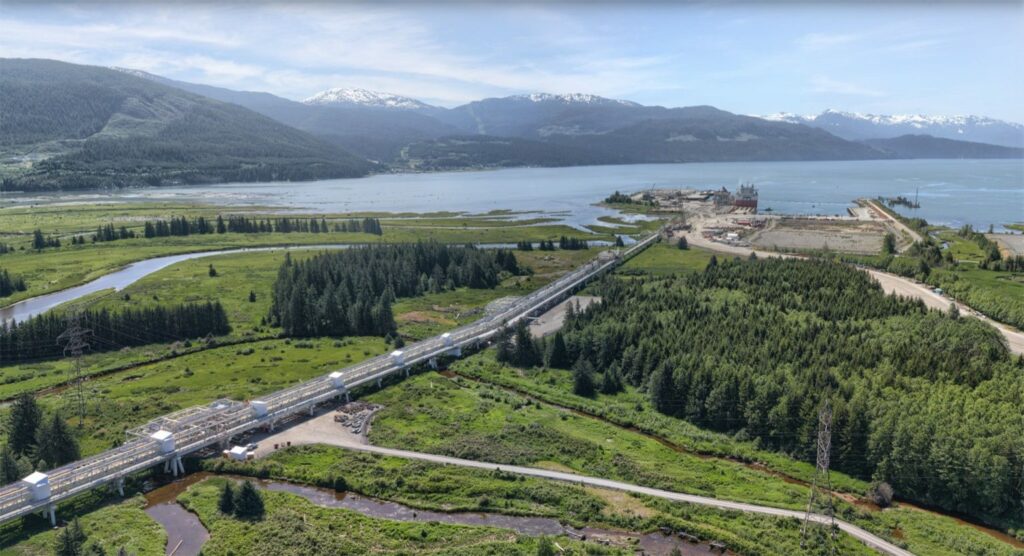Royalties help pay for public services like health care, hospitals, education and schools
Follow CEC on LinkedIn CEC LinkedIn
Follow CEC on Facebook CEC Facebook
Follow CEC on Twitter CEC Twitter

LNG Canada CEO Jason Klein. Photo courtesy LNG Canada
As Canada’s first LNG export terminal prepares for start-up, British Columbia is preparing for an influx of new revenues that will help fund government programs.
With the LNG Canada project online – expected by mid-2025 – the province expects proceeds from natural gas development will more than double.
The anticipated production of LNG by the middle of this decade boosts the province’s financial outlook, the government said in its Budget 2024.
For LNG Canada CEO Jason Klein, the coming start-up is “the launch of an entirely new Canadian industry.”
It will enable Canada’s first large-scale exports of natural gas to somewhere other than the United States.

LNG Canada site construction activities, Kitimat, June 2023. Photo courtesy LNG Canada
Shipments will primarily go to Asia, where demand is expected to increase by more than 50 per cent over the next three decades, according to the U.S. Energy Information Administration.
While it’s a little over one year before the first LNG carrier will set sail through the Douglas Channel to the ocean, Klein noted the benefits are already being felt.
“More than 30,000 Canadians have worked on our project to date, with almost 9,000 Canadians employed at our Kitimat site in January this year alone,” he said.
“The cumulative value of our project’s contracts and subcontracts to local, Indigenous and other businesses in B.C. has already exceeded $4.7 billion and includes more than $3.8 billion to Indigenous-owned and local area businesses.”
Natural gas royalties paid to the province, which help pay for public services and facilities such as health care, hospitals, education and schools, are expected to rise substantially.
This year, the B.C. government expects $684 million in natural gas royalties, according to its latest annual budget. In 2027, once LNG Canada is operational, this is forecast to surge to $1.4 billion.

Workers at the LNG Canada project site. Photo courtesy LNG Canada
Globally, LNG is playing an increasingly important role in energy supply, with demand set to continue growing beyond 2040, according to Shell’s latest industry outlook.
China is likely to dominate rising LNG demand as the country’s industries look to cut carbon emissions by switching from coal to gas.
Once operational, LNG Canada will demonstrate the low-emissions advantage of Canada’s LNG supply.
“We’ve designed a project with the lowest carbon intensity of any large-scale LNG export facility operating today,” Klein said.
“[It will have] emissions that are 35 per cent lower than the world’s best performing facilities and 60 per cent lower than the global weighted average.”
The unaltered reproduction of this content is free of charge with attribution to Canadian Energy Centre Ltd.
Share This:




